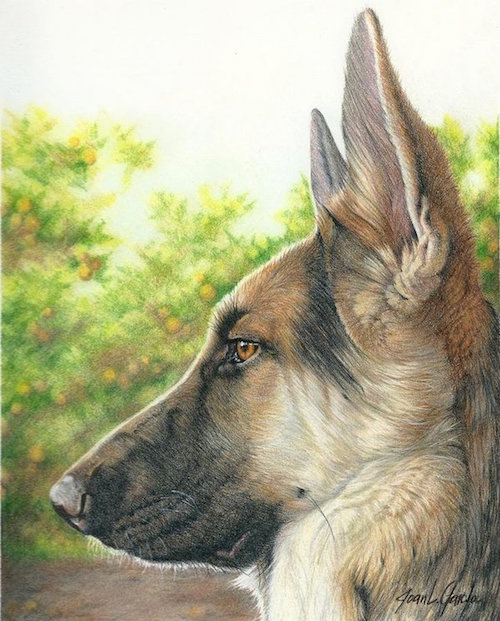
The German Shepherd Dog‘s name was not the only casualty of war with Germany when anti-German sentiment lead the breed to be renamed, “Alsatian” after the French-German border city of Alsace. In 1925, the Alsace club reinstated the old name, German Shepherd Dog, and the AKC followed suit, but the Kennel Club in the UK retained ‘Alsatian’ as the primary breed name, with ‘German Shepherd’ in brackets. They reversed this in 1977 when the breed became German Shepherd Dog (Alsatian), and made it permanent in 2010 when the word, ‘Alsatian,’ disappeared altogether.
The same anti-German sentiment that lead to a name change for GSDs also impacted the Dachshund, a breed often used to portray anything German in politically inspired material meant to bolster American spirits. The posters, cartoons and ads were often humorous, but they lead to contempt for a wonderful breed. It didn’t help that Kaiser Wilhelm II was an enthusiastic owner of Dachshunds, and his five dogs were buried at the Huis Do orn park. Nor did it help that two of his Dachsies, “Wadl” and “Hexl” made headlines for doing what came naturally: Displaying poor behavior (ok, attacking) Archduke Franz Ferdinand’s prized golden pheasants during a visit. It nearly caused an international incident.
orn park. Nor did it help that two of his Dachsies, “Wadl” and “Hexl” made headlines for doing what came naturally: Displaying poor behavior (ok, attacking) Archduke Franz Ferdinand’s prized golden pheasants during a visit. It nearly caused an international incident.
The AKC hoped to rebrand the breed by renaming them “badger dogs,” which would have been accurate, while others referred to them as “Liberty Pups.” Neither stuck, but it wouldn’t have mattered. We came across sources that made claims that anti-German sentiment was so strong, owners of Dachshunds who appeared in public with their dogs risked being assaulted and labeled as German sympathizers, or worse, having their dog seized out of their arms and stomped to death, and in England, Dachshunds were routinely kicked or stoned to death. We hope this isn’t true, and take some solace in such disturbing stories being questioned for their veracity.
Still, the breed did take a hit. In 1913, 217 Dachshunds were registered in Britain, and six years later, none were, while in the United States the breed fell from being one of the ten most popular breeds, to there being only twelve dogs registered in 1919.
After the War to end all wars, Dachshund enthusiasts began concerted effort to revive the breed both in numbers and reputation. Ads were created to demonstrate the Dachshund’s good qualities, which included patriotism. Happily, common sense prevailed and both the Dachshund and German Shepherd Dog was restored to healthy numbers and stellar reputations.
“The Shepherd Watching” by Joan Garcia is available as a print here
